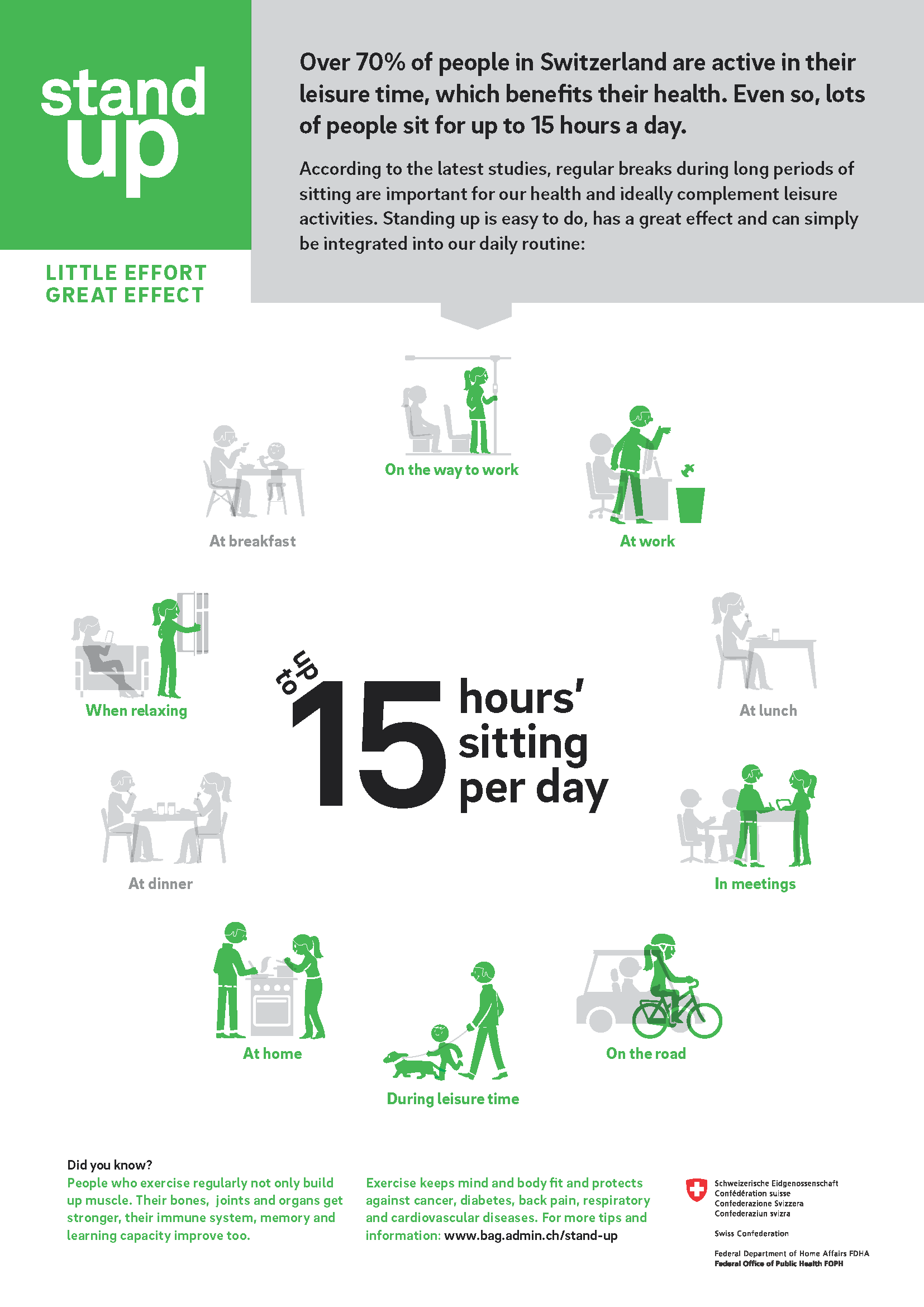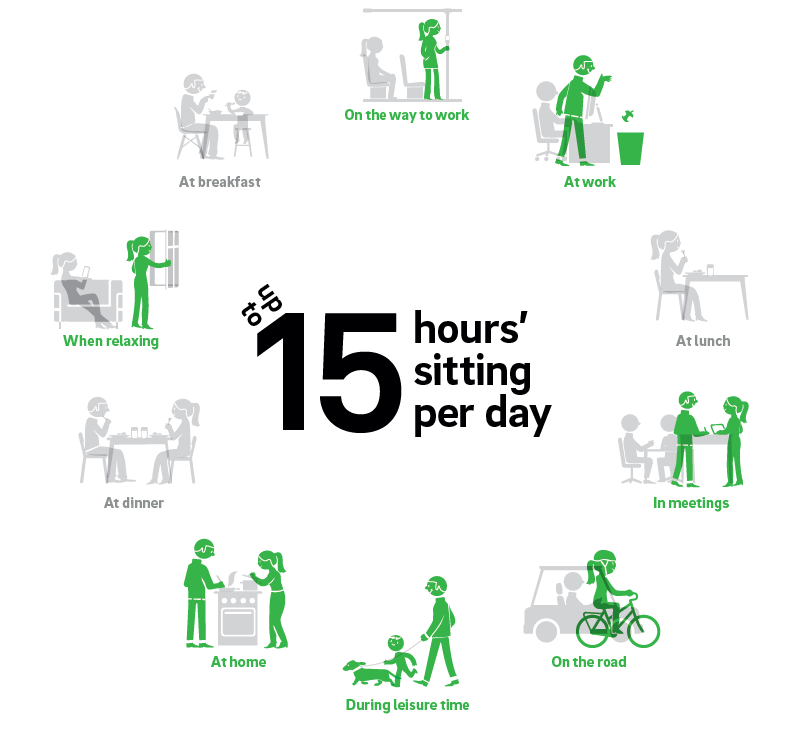Routinely sitting for prolonged periods is a health risk factor and can increase the risk of cardiovascular diseases, cancer, diabetes, psychological disorders and mortality among adults.
Among children, prolonged sitting increases the risk of obesity, metabolic diseases and even reduced bone density as well as having negative impacts on mental, motor and psychosocial skills. Prolonged sitting can cause circulatory problems among the elderly, leading to more frequent falls, reduced mobility, inadequate joint lubrication and muscle loss.

Regular bouts of standing bring direct health benefits. People who exercise not only build muscle, but also strengthen their bones, joints, organs and immune systems. In addition, they see improvements in their memory, learning ability and quality of sleep.
Small effort, big benefit
Studies shows that regular bouts of standing have a positive impact on health and ideally complement leisure activities. That’s why it’s important to regularly break up long periods spent sitting, both at work and in your own time. Standing is easy, makes a big difference to your health and can be done almost anywhere:
- At work, university or school: take regular breaks from sitting to move around or stand up, make telephone calls while standing, have conversations while standing or walking.
- During leisure time: take active breaks from the screen and have frequent time-outs from media consumption. Occasionally read your post, newspaper or text messages while standing and stand in the tram or bus.
- On an everyday basis: be active when on the move: walk or cycle to work or to the shops, get off the tram or bus a couple of stops early.
Physical activity in everyday life
You can find further information and ideas on daily exercise under “Documents”.
The Swiss population spend an average of 5.5 hours a day sitting. Employed persons spend more time sitting at 5.8 hours than those not in gainful employment (4.9 hours). Over 18.6 percent of the Swiss population spend even more than 8.5 hours per day sitting, with some sitting or at rest for up to 15 hours per day.
Dokumente

Every physical activity counts: Success in just a few steps.
Template sheets on standing for presentations (in German)

Whether at digital or real events and meetings - actively ask/encourage your audience to stand up in between!
For inspiration and as a reminder, you can copy one or more slides from this presentation and insert them into your presentation.
Template sheets on standing for presentations (in German) (PDF, 1 MB, 16.04.2024)
The PowerPoint version of the template slides for presentations can be ordered by e-mail.
Poster «Stand up»

The Poster can be be downloaded as PDF, in the formats A1, A3.
Poster «Stand up» A1 (PDF, 724 kB, 25.03.2024)
Poster «Stand up» A3 (PDF, 717 kB, 25.03.2024)
Links
Medien
Java script is required to display press releases. If you are unable or unwilling to activate Java script you may use the link below to access the Federal Administration News Portal, where you can read the announcements.
Last modification 09.04.2024
Contact
Federal Office of Public Health FOPH
Prevention of non-communicable diseases Division
Schwarzenburgstrasse 157
3003
Bern
Switzerland
Tel.
+41 58 463 88 24



